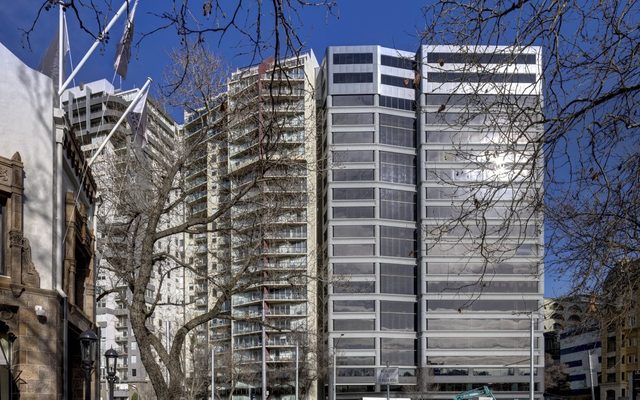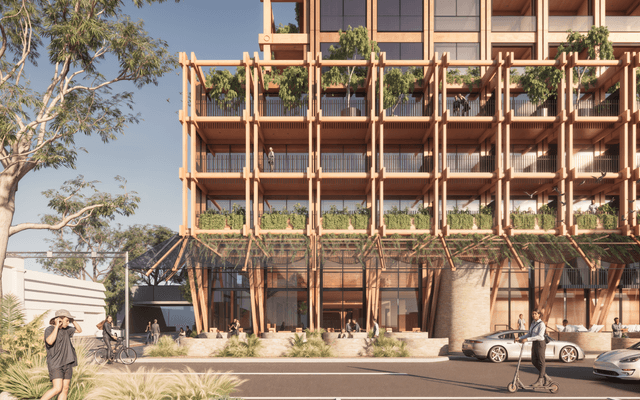This article is from the Australian Property Journal archive
THE Victorian government has given the go ahead for three skyscrapers in Melbourne totalling 2,022 apartments, including Australia's first 100-storey 319-metre tall building.
Singapore’s Aspial Corporation emerged as the biggest winner yesterday. After speculation that the project would be scaled down due to aviation clearances, planning minister Matthew Guy has approved a 319-metre tall tower, which is seven metres higher than the previous application of 312 metres.
Aspial’s Australia 108 tower will include 1,105 apartments.
A second apartment tower has been approved at 452 Elizabeth St, with 75 storeys (241 metres) and 622 apartments. It is just 10 metres shy of the Rialto tower and will include three levels of communal resident facilities, ground floor retail, and will result in a total investment of $150 million in the Victorian economy.
A third building, at 84-90 Queensbridge St, Southbank, is 54-storey tall (185 metres, similar to Collins Place) with 295 apartments, communal resident facilities, ground floor retail and representing a total investment of $80 million in the Victorian economy.
According to the minister, the three towers would contribute $830 million to the local economy, deliver 2,022 apartments, generate 5,800 construction jobs and provide home for 4,000 people.
“Australia 108 will be the first 100-storey building in the southern hemisphere. At a height of 319 metres above ground it fits within relevant aviation regulations,” Guy said.
“When completed Australia 108 will be the most striking building on Melbourne’s skyline and a great example of the strength of homegrown Melbourne architecture,” he added.
Guy said the three projects will take considerable pressure off existing urban areas by providing homes for 4,000 people in central Melbourne.
“Importantly, central Melbourne is the right place for high density, high rise living. It has fantastic services, culture, employment opportunities, excellent public transport access, and is the most walkable city in the country. Building more apartments in the city takes population pressure off quieter suburban areas,”
Guy added that the approval was further evidence of the government’s commitment to the state’s building industry.
“Since 2010, 54% more homes have gained building approval in metropolitan Melbourne than in Sydney, and 11% more than the entire state of New South Wales. By building more homes, we are ensuring we won’t have the drastic and harmful housing shortage Sydney is experiencing,” he continued.
Greater Melbourne has had 187,111 homes approved since 2010, while Sydney had 121,322 and NSW in total had 168,429. Out of Melbourne’s total, 93,193 were medium and high density homes, and 93,918 were detached homes, according to the minister.
The Urban Taskforce’s CEO Chris Johnson said Melbourne is leading the country in tall skyscrapers.
Recently the Urban Taskforce warned that Sydney is being left behind by Melbourne, Brisbane and the Gold Coast, due to dated planning restrictions, which has not changed since 1977.
An Urban Taskforce report found the tallest building in Sydney is Sydney Tower, which reaches 309 metres at the very top of its spire, although it is only 239 metres tall, which is the highest available floor.
“Brisbane and the Gold Coast are not far behind but Sydney is overly controlled by planning and aircraft regulations and only gets buildings up to 70 storeys.
“Of the three cities Sydney has the most constrained CBD footprint with the harbour and parks limiting development potential so being further restricted in height is not helping Sydney’s future as a global city,” Johnson said/
“The City of Brisbane is challenging the Federal aircraft rules to allow greater height and Sydney needs to do the same.
“The principle of building high rise residential towers near transport nodes is an essential part of housing our growing population while giving critical mass to rapid transport systems.
“The Melbourne example of building high rise apartments within the city centre leads to urban vitality through mixing office workers and residents. Australian cities need to continue this trend,” Johnson concluded.
Property Review



